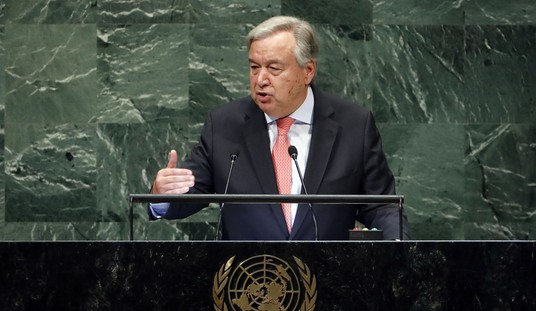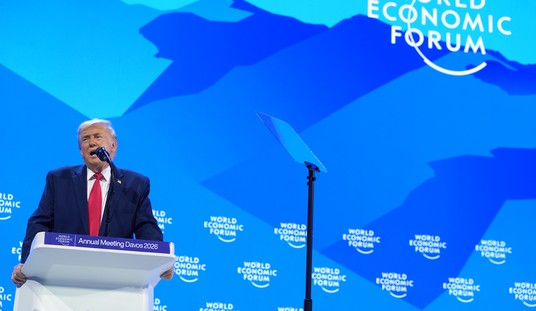When the Netherlands embraced euthanasia, along with other European countries, it claimed that it allowed for compassionate ends to lives already doomed to a suffering end. Critics warned that it would not only go far beyond the supposedly limited scope of assisted suicides, it would also create a culture of death in which suicide for any reason would become socially acceptable — and perhaps even expected. The Guardian did an in-depth look at the Netherlands’ death statistics in 2017, ten years after the definition of “unbearable suffering” was made more ambiguous, and found that “more than a quarter” of all deaths in the country were either suicides, assisted suicides, or “terminal sedation.”
“Has Euthanasia Gone Too Far?” asked the Guardian. The clear answer is a resounding yes, emphasis mine:
Keizer is one of around 60 physicians on the books of the Levenseindekliniek, or End of Life Clinic, which matches doctors willing to perform euthanasia with patients seeking an end to their lives, and which was responsible for the euthanasia of some 750 people in 2017. For Keizer, who was a philosopher before studying medicine, the advent of widespread access to euthanasia represents a new era. “For the first time in history,” he told me, “we have developed a space where people move towards death while we are touching them and they are in our midst. That’s completely different from killing yourself when your wife’s out shopping and the kids are at school and you hang yourself in the library – which is the most horrible way of doing it, because the wound never heals. The fact that you are a person means that you are linked to other people. And we have found a bearable way of severing that link, not by a natural death, but by a self-willed ending. It’s a very special thing.”
This “special thing” has in fact become normal. Everyone in the Netherlands seems to have known someone who has been euthanised, and the kind of choreographed farewell that Keizer describes is far from unusual. Certainly, the idea that we humans have a variety of deaths to choose from is more familiar in the Netherlands than anywhere else. But the long-term consequences of this idea are only just becoming discernible. Euthanasia has been legal in the Netherlands for long enough to show what can happen after the practice beds in. And as an end-of-life specialist in a nation that has for decades been the standard bearer of libertarian reform, Keizer may be a witness to the future that awaits us all. …
As people got used to the new law, the number of Dutch people being euthanised began to rise sharply, from under 2,000 in 2007 to almost 6,600 in 2017. (Around the same number are estimated to have had their euthanasia request turned down as not conforming with the legal requirements.) Also in 2017, some 1,900 Dutch people killed themselves, while the number of people who died under palliative sedation – in theory, succumbing to their illness while cocooned from physical discomfort, but in practice often dying of dehydration while unconscious – hit an astonishing 32,000. Altogether, well over a quarter of all deaths in 2017 in the Netherlands were induced.
Actually, an increasing number of those died under “terminal sedation” rather than “palliative sedation,” based on this description. Wesley Smith explains the difference at National Review:
These are not all lethal-injection euthanasia deaths. As I have written here before, many more people are killed in the Netherlands by “terminal sedation”–a slow motion euthanasia wherein patients not in the active stage of dying are put into artificial comas and denied all sustenance until they dehydrate to death–than die by lethal jabs. (Terminal sedation should never be confused with the proper practice of “palliative sedation,” which eases a dying patient’s symptoms while not intentionally causing death.)
It’s one thing to do this when it has been explicitly authorized, as in a living will applying to the very end stage of disease, but it is not a pleasant passage. (As Jazz will point out in the next post, it can be less unpleasant than the alternative.) Smith notes that some of the recipients of these “merciful” deaths never actually asked for terminal sedation, or even indeed to be put to death:
Since euthanasia was first decriminalized in the Netherlands, the country’s doctors have traveled a very dark road. Induced deaths have expanded from the terminally ill who ask for it, to the chronically ill who ask for it, to people with disabilities and the elderly who ask for it, to people with dementia, psychiatric patients with mental illness (83 in 2017), and the infanticides of babies born with serious or terminal illnesses or disabilities, who don’t have the capacity to ask for it.
Dutch law permits organ harvesting to be conjoined with euthanasia. There have been joint geriatric killings of couples fearing widowhood. In 2015, Dutch statistics revealed that 431 patients were killed by doctors who never asked for euthanasia–known in the lexicon as “termination without request or consent”–with next to nothing done about it even though such unasked-for lethal acts are technically murder under the law.
The good news is … well, there isn’t any good new here, except for a dawning realization among some previous euthanasia advocates that the Netherlands might have gone too far. The Guardian’s Christopher de Bellaigue doesn’t see an end to the expansion of euthanasia among the Dutch. That has some warning other European nations to read their statistics very, very carefully before treading down this road:
It is too early to say if euthanasia in the Netherlands has reached a high-water mark – and too early to say if the other countries that are currently making it easier to have an assisted death will also hesitate if the practice comes to be seen as too widespread. But it is significant that in addition to the passionate advocacy of Bert Keizer – who positively welcomes the “slippery slope” – Boer’s more critical views are being solicited by foreign parliamentarians and ethicists who are considering legal changes in their own countries. As Boer explained to me, “when I’m showing the statistics to people in Portugal or Iceland or wherever, I say: ‘Look closely at the Netherlands because this is where your country may be 20 years from now.’”
“The process of bringing in euthanasia legislation began with a desire to deal with the most heartbreaking cases – really terrible forms of death,” Boer said. “But there have been important changes in the way the law is applied. We have put in motion something that we have now discovered has more consequences than we ever imagined.”
The road to Hell is paved with good intentions, and nowhere has that proven more true than with the advocacy of assisted suicide. It’s tough to credit ethicist Theo Boer’s remark here, though, as critics warned from the very start of the Dutch embrace of euthanasia where the road would lead. They chose not to listen, choosing instead to believe that promoting a culture of death would have limiting principles. That assumption has proven wrong every time it has been introduced, and with devastating consequences, even in pursuit of the greater good. Perhaps especially when pursued, ostensibly, for the greater good.







Join the conversation as a VIP Member